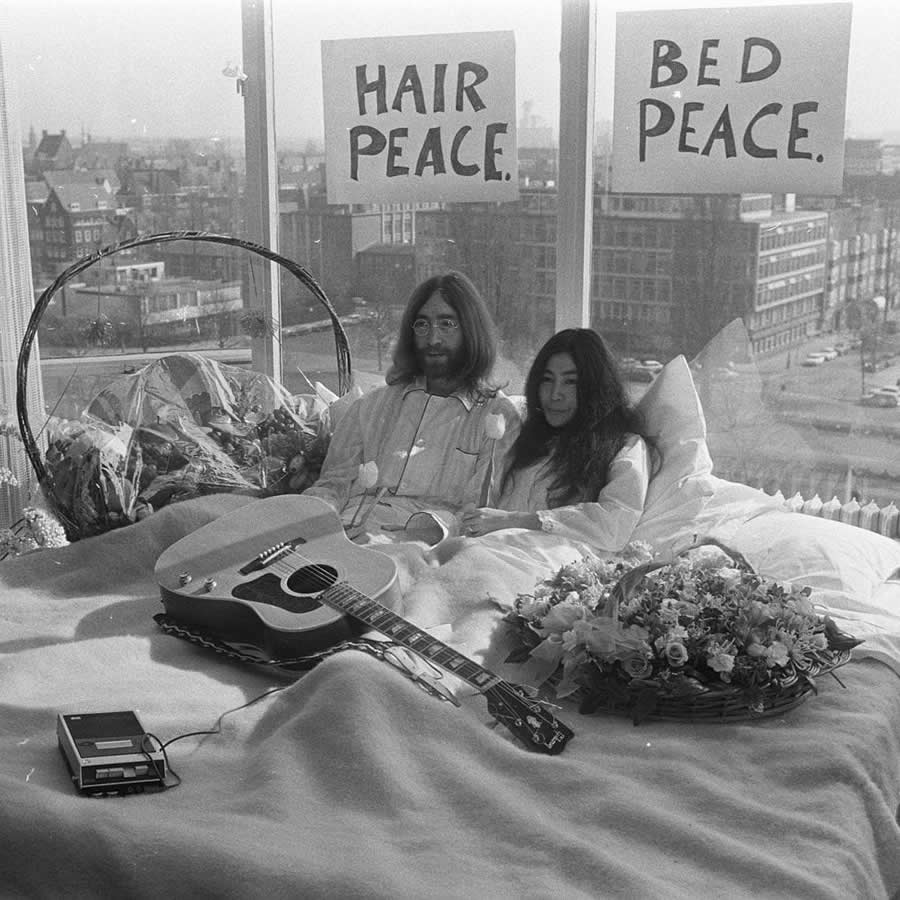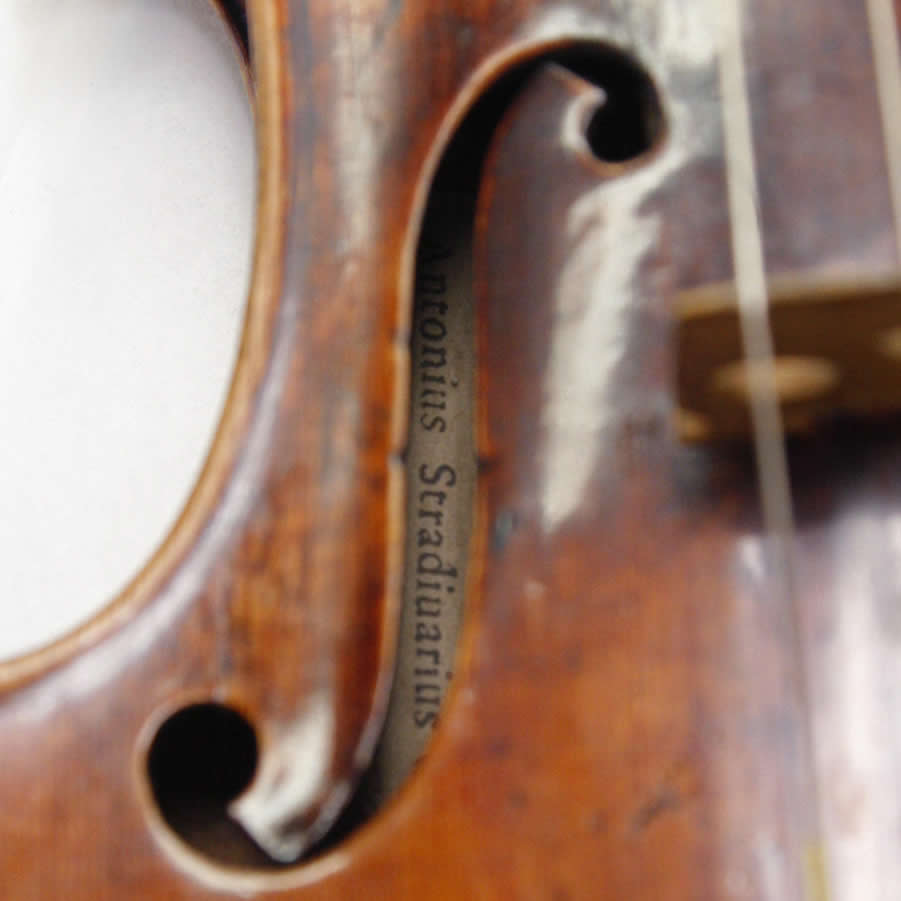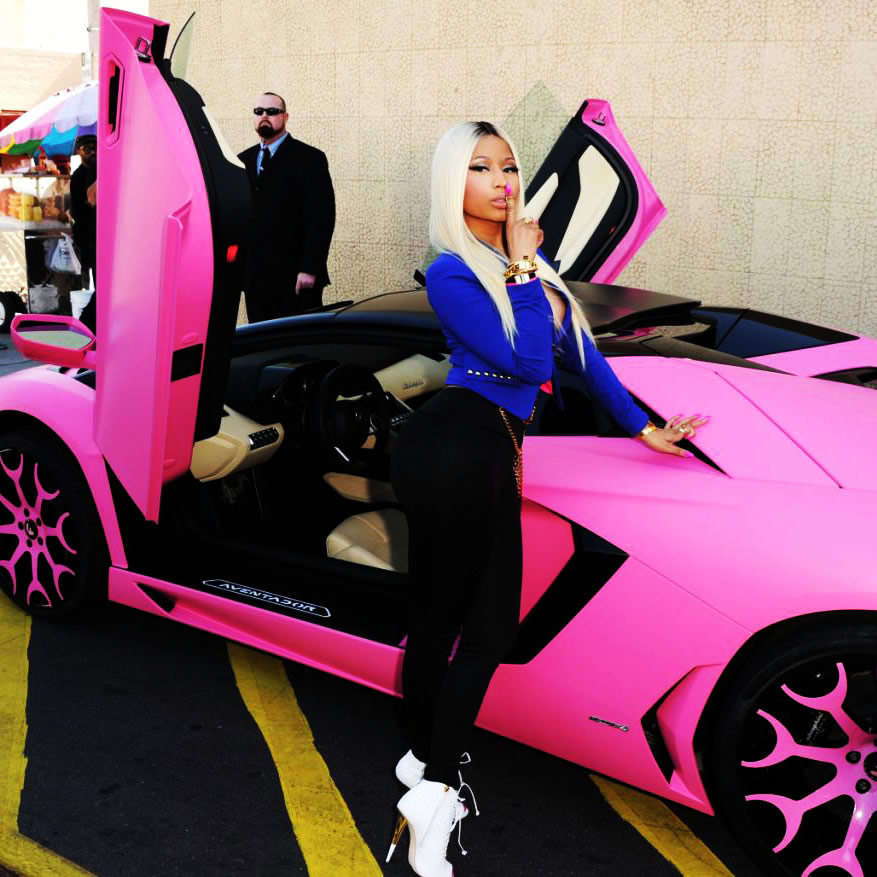EDITOR’S NOTE: This essay is reprinted here with kind permission of the author. It first appeared on his blog, where the reader will find much more of interest.
Sometimes one hears the critique that classical music is no longer compatible with modernity. What “modernity” is supposed to mean always remains in darkness, as if the very word “modernity” were so obvious in its meaning that any further explanation would be superfluous. If “modern” means “of this time, of today,” this category is quite ephemeral because tomorrow there will be another today. But it is something else: modern culture, with its contemporary human condition, is felt as a fundamentally different way of life with values and experiences, strongly deviating from the past. All this is of course a generalization, but it paints a mood, and suggests that culture of the past has become “another country,” inaccessible to modern people. And it is quite remarkable that the core repertoire of classical music stems from that “other country”: modern musical life has one foot firmly in the past. And since the other foot inevitably stands on the brittle ground of contemporary times, the position becomes increasingly uncomfortable if the culture of the past is seen as fundamentally different from modern life experience.
Is there any fundamental contradiction found in putting a CD with a Mozart symphony in the player while driving a modern car on a paved road through the suburban sprawl of a big, modern city? Or in performing a piece by J.S. Bach on a piano, or his Brandenburg Concerti on modern instruments? Or in viewing a Vermeer painting dressed in modern “clothes” – the canvas being lightened by carefully adjusted spotlights which were unthinkable in the 17th century? The Historically Informed Performance (HIP) movement in music, which presents music from the past on old, authentic instruments or else on exact copies of them, is a very modern phenomenon and nobody would demand that such performances are presented with the musicians dressed in 18th-century garb, with candles on their music stands. On the contrary, successful ensembles like John Eliot Gardiner’s Orchestre Revolutionnaire et Romantique, though composed of period instruments, use all the modern means and recording facilities available to spread their vision – which does not in the least diminish other possible interpretations of the same music. It all forms a rich palette of varied artistic experience which is the hallmark of true modernity.
I think that our human nature, in its essential elements, does not differ very much from that of our ancestors and that changes in society, lifestyle, and opinions happen quite slowly while the basic human needs remain the same. Since the 19th century, the West has been fascinated by the leaps of progress made in science and technology, which inevitably fed the myth that “progress” would be the answer to all the troubles of mankind. Looking back at the upheavels of the 20th century, we know now that this is not the case. In science and medicine, progress is definitely of great value, but in other spheres of human activity, “progress” is a dangerous notion because it may disguise decline and erosion, as can be noticed in the visual arts where obvious decline in abilities and aesthetic sensibility is so often sold as “renewal.”
Our distorted view of the relationship between modernity and culture has much to do with the idea that culture develops like a timeline: first this, then that – development from A via B to C and so on, with the implication and the hope that it is, in general, an upward line. If this were so in culture, we would end up with some obvious absurdities, like the notion that Picasso was an improvement on Velasquez, and that Xenakis was an improvement on Bach. In fact, the art of the past is with us in our present. It has not just survived the erosion of time but transcended the boundaries of time and place. The best works from the past are thus contemporary forever and any new art can only aspire to contribute to the ongoing accumulation of works, representing the creative mind of humanity. History in art thus looks like a quantitative accumulation process, and not like a timeline.
During my studies in Rotterdam in the seventies, the musical world was shocked by the appearance of a new music intending to break with the music from the past – which was still very much alive in performance practice. There were heated debates, and music – old as well as new – became gravely politicized. If audiences rejected Boulez or Stockhausen they were bourgeois and did not understand their times; and people embracing the Brave New World of sound demonstrated their keen commitment to modernity. Since the political climate of those days was predominantly Left-wing, modernity was Left, and bourgeois rejection of modernity in music was Right. So simple was the world in that time. In my parental home, classical music was a natural presence through radio and recordings, forming an organic backdrop to a rather bohemien life style: both my parents were painters. I never considered music as being related to some political point of view, and I was quite surprised when, in my first years at the conservatory, Beethoven, Mahler and Ravel were labelled “outdated” and “bourgeois” by my teacher, who tried to get our small group of composition students interested in the “real stuff”: Schoenberg, Berg, and Webern and everything following from their heroic explorations. Interestingly, the music of Schoenberg had never been aired on the classical stations at home, let alone Berg and Webern, and our record collection went no “further” than Ravel’s piano concertos and Bartok’s Concerto for Orchestra and Third Piano Concerto. Also, I was surprised to find out that all the music which I had got accustomed to was “old.” I never experienced Bach, Mozart, Beethoven, and Brahms et al as something “old” or as something far removed in time. In contrary, it was all very “of now” and bursting with life. Something that was so directly expressive and fresh could not possibly be of “another country.” Of course I knew that the music had been written long ago, but given the character of the music, that seemed to be entirely irrelevant, and loving and understanding that music did not make me feel “old fashioned” or “’bourgeois” – which would have been quite strange given the rather chaotic and un-bourgeois milieu in which I was growing up. But in the composition class, all that was put into a very different context.
Of course the students were fed with all the “subversive” music which was, in general, rejected by bourgeois concert life. I remember these group listening sessions as fascinating nightmares during which we were led into the dark world of atonal despair and into the postwar experiments with pure but chaotic sound and electronics. On one particularly sunny and clear April morning, the Three Orchestral Pieces of Alban Berg seemed suddenly to turn the weather into a dark hole of rain and angst: a thunder storm had landed on the quarter. Exercises in dodecaphony and serialism posed some considerable challenges, and I found it interesting to wrestle with complex constructions – like trying to get a puzzle right and hoping that the image that would appear in the end would be something artistically meaningful. (It almost never was, since a puzzle is not an artistic undertaking.) A falling fifth in one of my early pieces provoked some contemptuous sniffing by the teacher because it reminded him of the beginning of Beethoven’s ninth symphony – an embarrassing faux pas which I should avoid in the future if I ever wanted to be a composer. All this made very clear that music was not just music, but an embodiment of political values related to interests: so much new music was being written but not accepted in concert practice, where people were supposed to merely repeat the same “old” works like zombies in a perpetual state of comatose cultural confusion, ignorant of the demands of modernity which was knocking on the closed doors of the concert hall.
Modern visual art did not suffer from those bourgeois rejections and quickly developed a specialized market with big money passing through ever more eager hands, accompanied by a rapidly emerging army of theoretical “experts” encouraged by the infinite horizon of necessary and salaried explanation. Interestingly, the museums with the “old” collections everywhere in the Western world continued to attract visitors, as is still the case today – and now those works have become another half century older since the new wave of modernism appeared. Modernist music and modernist visual art created a territory of their own, separate from the culture of the past, underlining the “newness” of the phenomenon and its disconnection from existing art and music. To explain this distinction, theory and ideology were wielded as weaponry against the scepticism of “the bourgeois.”
Understanding that musical meaning was not to be found in modernist ideologies, I began to study art history, hoping to find examples of debates which could throw a light upon those of the present. And indeed, I found some: in 17th-century France a debate flared up among artists and architects around the question of whether or not modern artists were superior to those of Antiquity – the art of the ancient world then being considered so great that one should always try to take it as an example. It appeared that the rejection of a past culture was a relatively recent phenomenon and that in former ages the accumulated presence of achievements from the past was merely a huge repertory of means to be used and varied in the present. Sometimes harking back to an even older past was, for that reason, considered more “modern” – like the revival of classicist architecture near the end of the 18th and deep into the 19th centuries and the entire Italian Renaissance which was inspired by the art of Antiquity, both movements adapting the achievements of the past to the different needs of modern times. Opera was invented as a fantasy about the way the great plays of Ancient Greece might have been performed. Sources spoke of reciting and singing accompanied by instruments, but because concrete information was completely lacking, composers had to invent such presentation themselves – a beautiful example demonstrating modern invention as a result of looking backwards.
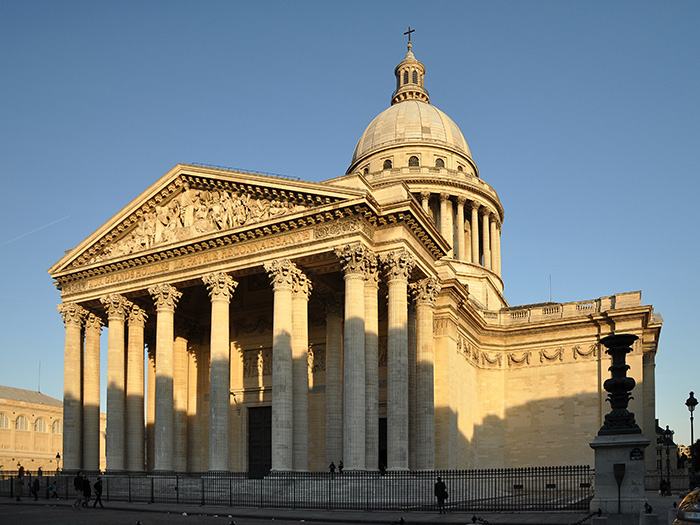
After my studies in Rotterdam I spent a year in Paris, keeping myself alive with private music teaching and a shabby little job at the Chamber of Commerce, where I sorted cards and filed them alphabetically and fetched coffee for the office’s real employees. Exploring the poetical cityscape and visiting the Louvre and the big monuments was a revelation: beauty and aesthetic meaning was everywhere – not as some alien object in a glass box, but as a natural part of life. To take just one from numerous examples, the Panthéon – this impressive monument to “the great men of the fatherland” – had been designed as a church in a very spare classical style, with a hughe dome topping a really excentric structure. The outside looks like a very square tomb, but the inside is light and elegant with vaults airy as a gothic cathedral. And indeed, the architect, as I discovered, had wanted to create the same high-rising effect of the medieval churches but with the vocabulary of classicism. The result is breathtakingly beautiful and also very original, now forming an important signifyer of identity to the nation.
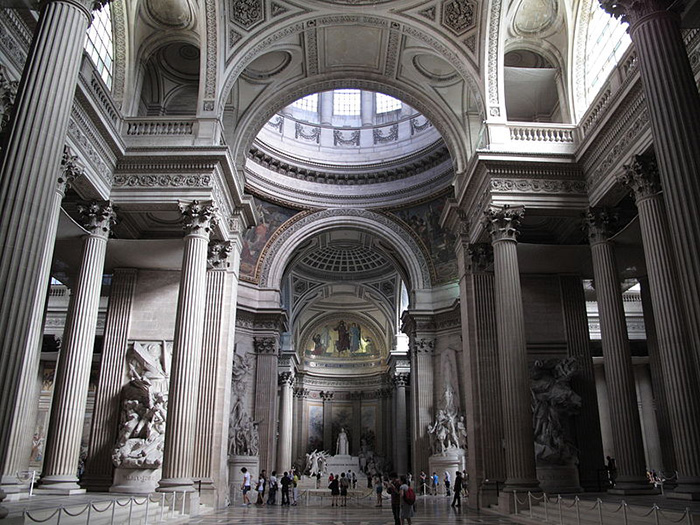
A very instructive lesson in classicism: although the separate elements are borrowed from examples (the entirely traditional, “over-used,” but always impressive temple front; the dome following the design of the dome of St. Paul’s in London; the tall interior with customary pillars and vaults, using 18th-century decoration in a structure resembling gothic vaults), the resulting mix has a distinctively original effect, demonstrating Roger Scruton’s description of originality as the personal touch which becomes visible against a background of tradition. Also, it’s not ”just” a temple front: details and proportions are extremely well-designed, adding to the effect of tallness and forceful expression of grandeur.

Of all the treasures of the Louvre I only want to mention the Italian paintings from the Renaissance, showing that the particular imaginings of ages ago are capable of transmitting their beauty and meaning to crowds of people living in entirely different circumstances.
It became very clear to me that, in an artistic sense, “the past” does not exist. The works exist. The implication is of course that artists today can take these works as examples to learn their craft, so that they acquire the means to express their own inner drive to contribute to the better aspects of the world. After my return to the Netherlands, it became my goal to get to the heart of the classical tradition – classical in the widest sense, like we speak of “Indian classical art” as distinct from “modernity” – and to learn to adopt the techniques which were best suited to what I wanted to “say” in the “language” of music. As with all cultural endeavors, we learn through imitation. In the process of internalizing creative processes we become what we have learned, and the craft turns into a personal means of expression.
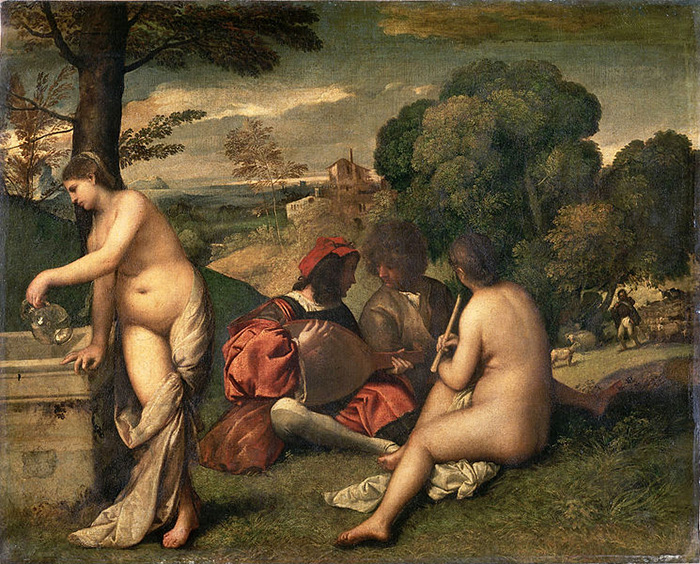
Of course such ideas fell completely outside the world view of modernism and of modernity as a narrowly defined moment on the timeline of history – and outside the established circles of “contemporary music” with their specialized festivals and performances by specialized ensembles. But maybe that was a good thing, because exploration and development that is endorsed by establishments may hinder the inner freedom that is a precondition of authentic creation – certainly if such establishments cultivate ideologies, party lines, and taboos for their adherents. Attempts to restore something of the classical tradition in music are, of course, important targets for taboos in a cultural climate where a narrow-minded notion of modernity is de rigueur. Yet we have seen in today’s contemporary music scene those hard-line taboos erode considerably. And in the end, that may offer possibilities of development exceeding those of modernism and its watered-down progeny, the ideas of which seem by now completely exhausted and feeble in comparison with the best of our traditions.
Even if we acknowledge that we live now in a post-postmodern era, I believe that works of art available or accessible to us should be judged by their ability to enrich our lives and that we must make ourselves accessible to the ideas and aesthetic expressions contained therein, because they may have something of value to impart to us. This is basically a timeless, a-historical position. And from that position, we can see how much of the art and music from the past is still very much present all around us, and how powerfully it still “speaks” to us. This is a reassuring sign that the human condition may be strong enough to endure even the most disruptive influences of modernity; and it shows us that one of the blessings of this same modernity is that so much art from the past is still available and accessible. More and more painters, architects, and composers no longer feel inhibited to explore these examples of humanism for their own artistic endeavors. And it seems to me that this is contributing to the available territory of meaningful art. May this be a renaissance of authentic culture, taking its place within the broad context of available, contemporary artistic experience.




